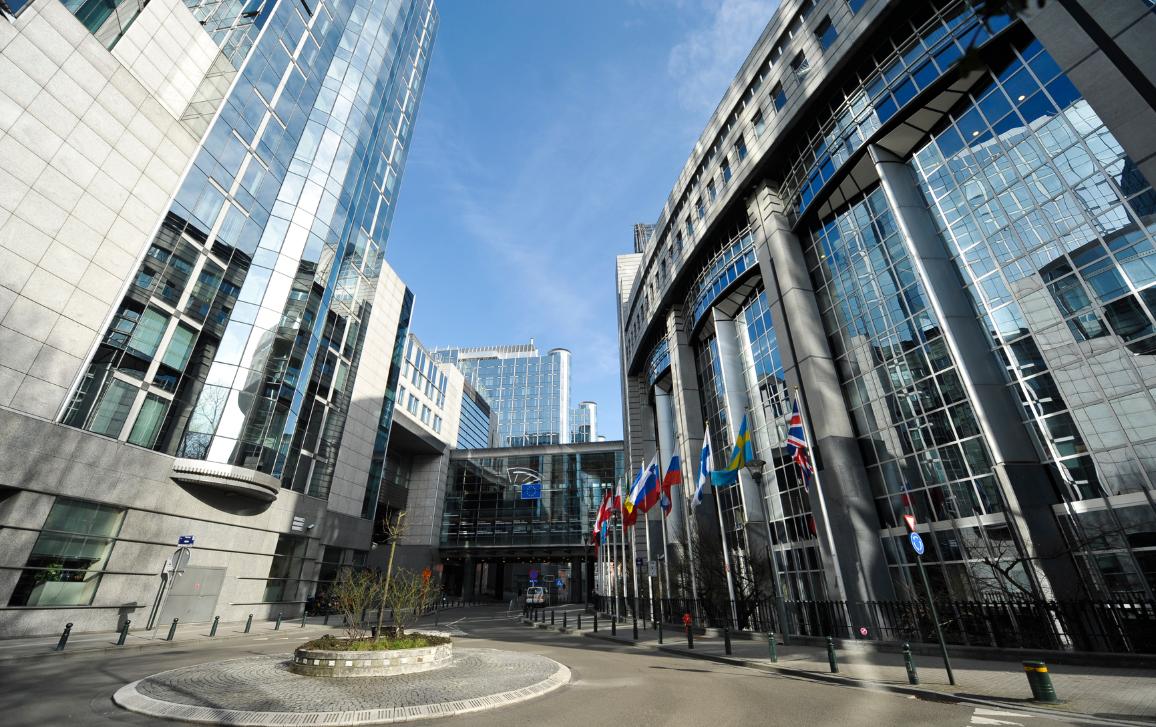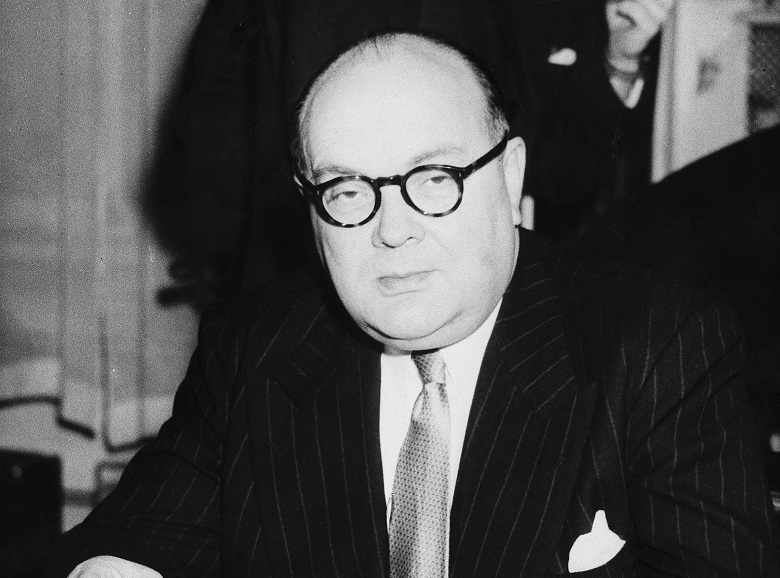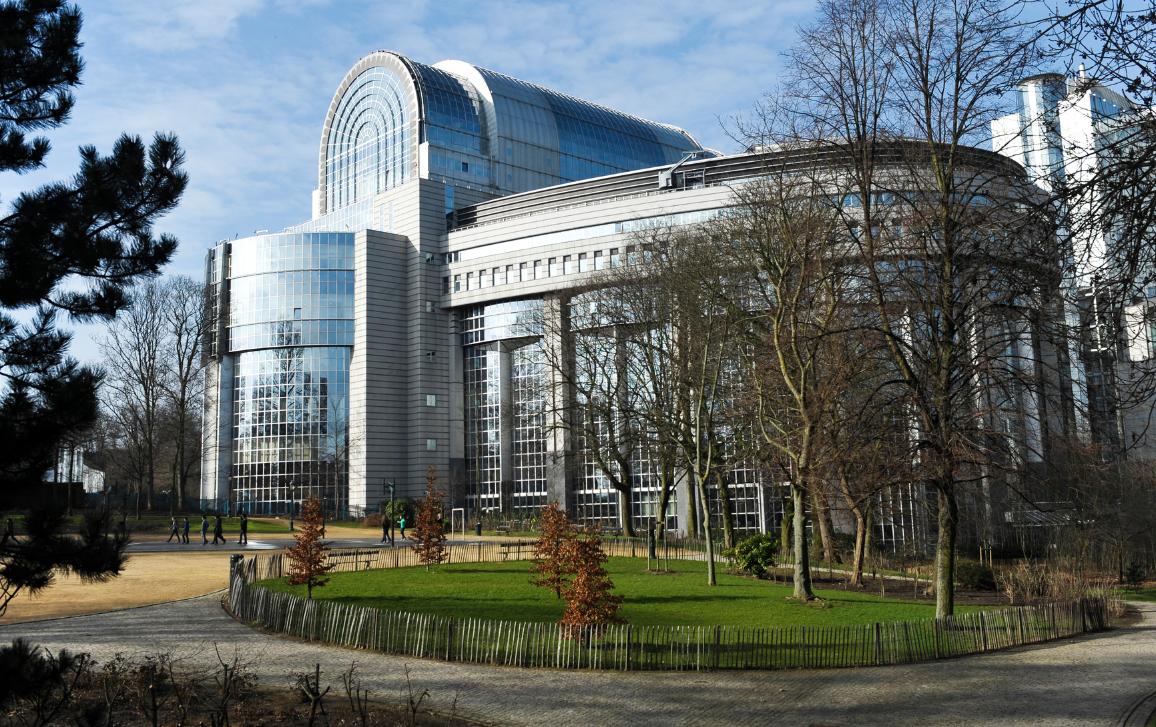 Aerial view of the Paul-Henri Spaak building in Brussels © Architects: Vandenbossche SPRL, CRV S.A., CDG S.P.R.L., Studiegroep D. Bontinck; Façade and Hemicycle © Arch M. Boucquillon Belgium; Image © European Union 2019 – European Parliament
Aerial view of the Paul-Henri Spaak building in Brussels © Architects: Vandenbossche SPRL, CRV S.A., CDG S.P.R.L., Studiegroep D. Bontinck; Façade and Hemicycle © Arch M. Boucquillon Belgium; Image © European Union 2019 – European Parliament
Visionary, talented statesman, Prime Minister of Belgium
Like many other founders of Europe, Paul-Henri Spaak entered the turbulent world of early 20th-century politics at an early age. He was born in Schaerbeek in 1899 into a family which drew its heritage from the spheres of politics and literature. But unlike many others, it was not his father or any other male figure who persuaded him to enter politics, but his mother.
As a senator, his mother, Marie Janson, had been the first female member of the Belgian Parliament, in 1921. She had chosen to stand for the Belgian Workers' Party (POB) - a far cry from the liberal affiliations of her own family. And in his turn, Paul-Henri Spaak followed her example and took the decision to join the POB. From then on, mother and son followed the same political trajectory as, after the interruption of the war, both followed the party when it became the Socialist Party.
 Paul-Henri Spaak building © Association des Architectes du CIC: Vanden Bossche sprl, CRV s.A., CDG sprl, Studiegroep D. Bontinck; Image © European Union – European Parliament
Paul-Henri Spaak building © Association des Architectes du CIC: Vanden Bossche sprl, CRV s.A., CDG sprl, Studiegroep D. Bontinck; Image © European Union – European Parliament
The beginnings
Many founders ended up in prison for opposing totalitarian regimes, and Spaak was no exception. During the First World War he lied about his age to enlist in the Belgian army. Captured by the Germans, he spent two years as a prisoner of war. After 1918 he studied Law at the Free University of Brussels before becoming a lawyer at the Brussels Bar.
He embarked on a career in politics in 1932. Representing the POB's young, pacifist and anti-establishment generation, he was elected a member for Brussels and became a political adversary of his uncle, Paul-Émile Janson, a liberal. He was Minister of Transport and Communications (PTT) from 1935 to 1936 and then Minister of Foreign Affairs and Prime Minister from May 1938 to February 1939, a post he had to leave to return to Foreign Affairs in Hubert Pierlot's government of national unity following the entry into the war of France and England. He was a member of the Belgian government which re-formed in exile in London in October 1940.
On his return to Brussels in 1944 and his post as Minister of Foreign Affairs, he was once again appointed Prime Minister in post-war governments. He negotiated Belgium's participation in the Marshall Plan and the establishment of the Council of Europe. He made his grand entry onto the international stage in 1945 as President of the first session of the General Assembly of the United Nations, and in 1956 he became Secretary-General of the North Atlantic Treaty Organisation (NATO).
 Paul Henri Spaak, Belgium's Premier and Foreign Minister, July 19, 1948. © AP 1948 - Redistribution of the image not authorised / EC / EP
Paul Henri Spaak, Belgium's Premier and Foreign Minister, July 19, 1948. © AP 1948 - Redistribution of the image not authorised / EC / EP
His contribution to Europe
Paul-Henri Spaak's vision of European cooperation earned him the moniker of linchpin of the European integration project. Even though much of Europe was in ruins after the Second World War, Spaak saw this as an opportunity to turn it once again into a powerful continent through economic and political cooperation, sensing the possibility of a unified post-war Europe. The creation of the Benelux Customs Union in 1944, which he negotiated with his counterparts from the Netherlands and Luxembourg during his exile in London, is a good example of regional entente which, born of a simple idea, had nevertheless been neither suggested nor set out in detail before: the free movement of capital, persons, services and goods within the borders of the three countries, a source of inspiration for European integration.
At the beginning of the 1950s, Spaak was President of the Common Assembly of the European Coal and Steel Community (ECSC). The failure of the European Defence Community in 1954 was a great disappointment to him. Together with his Benelux counterparts and with the help of Jean Monnet he pondered the question of how to achieve a European recovery.
In 1955 Spaak chaired the intergovernmental conference tasked with studying sectoral integration (transport and energy) and the Common Market. The 'Spaak Committee' produced a draft report which served as the basis for negotiating the creation of a European Economic Community (EEC) and a European Atomic Energy Community (Euratom). On 25 March 1957, Paul-Henri Spaak signed, on behalf of Belgium, the Treaties of Rome establishing the EEC and Euratom.
After his appointment to the top NATO post, in 1961 Spaak once again became Minister of Foreign Affairs. He argued in favour of the United Kingdom joining the European Communities and was opposed to General de Gaulle's policy on Europe. 'The Europe of tomorrow must be a supranational Europe', he stated, rebuffing the nationalism espoused by some.
Spaak is portrayed in history books as the driving force behind European integration. He believed that a European project was feasible long before economic and political cooperation had left the drawing-board.
 Paul-Henri Spaak building © Association des Architectes du CIC: Vanden Bossche sprl, CRV s.A., CDG sprl, Studiegroep D. Bontinck; Image © European Union – European Parliament
Paul-Henri Spaak building © Association des Architectes du CIC: Vanden Bossche sprl, CRV s.A., CDG sprl, Studiegroep D. Bontinck; Image © European Union – European Parliament